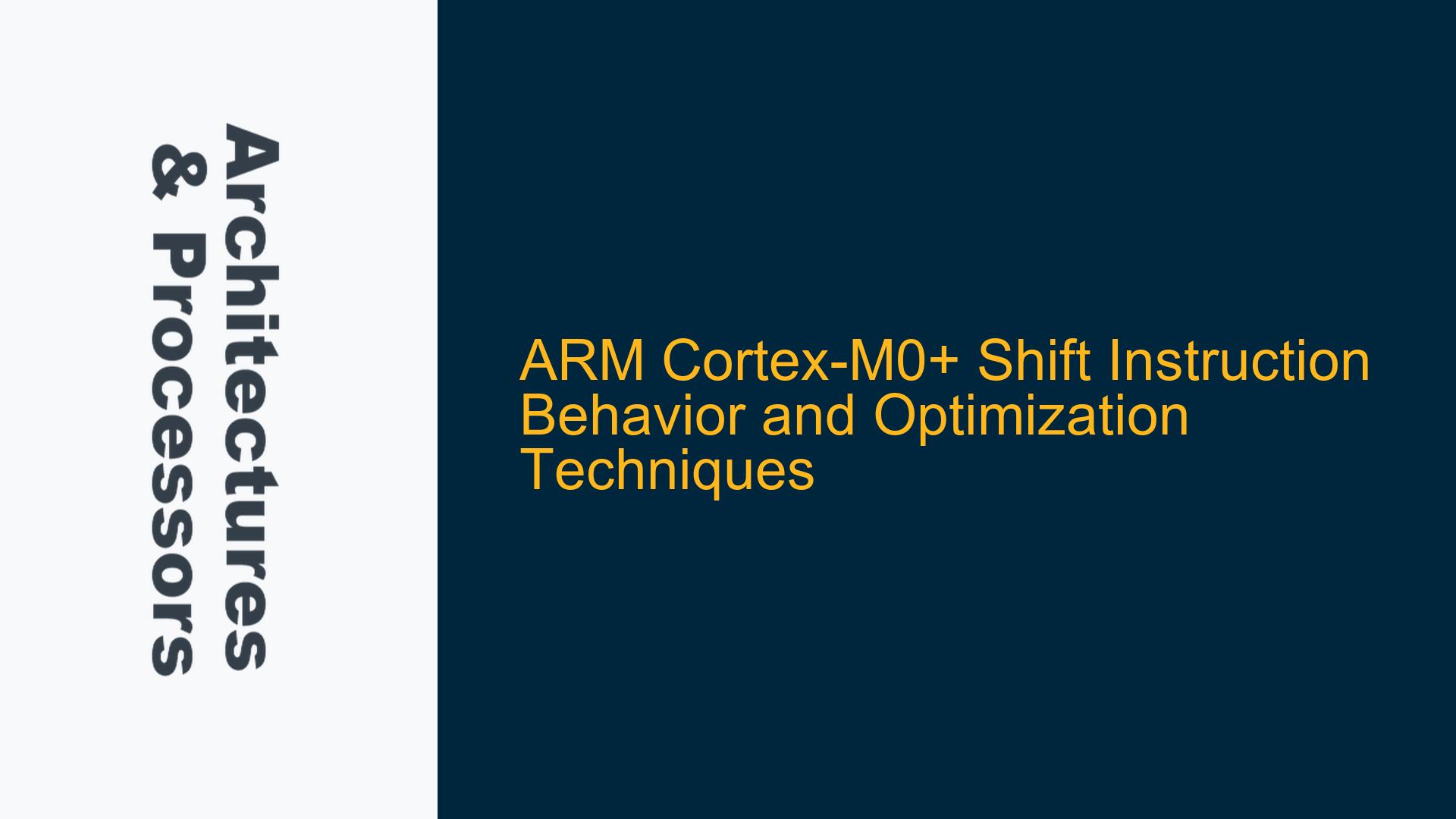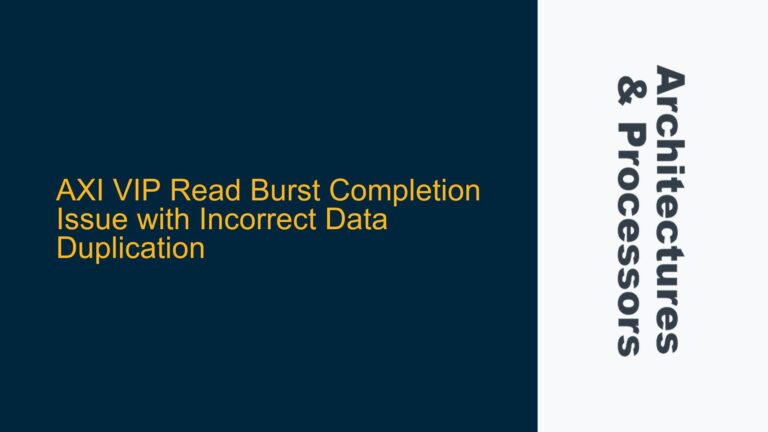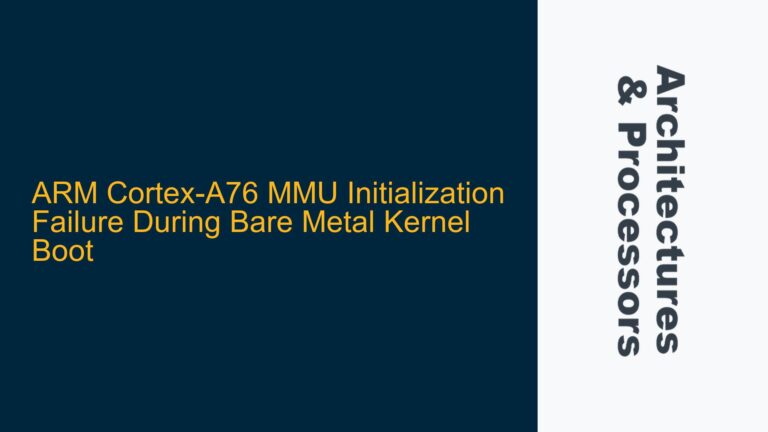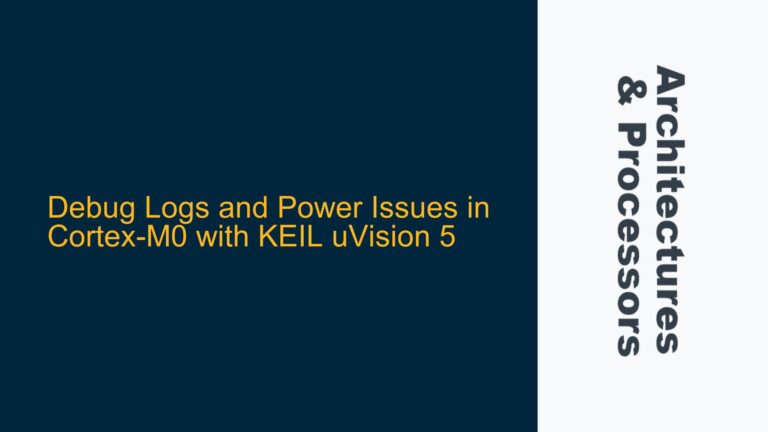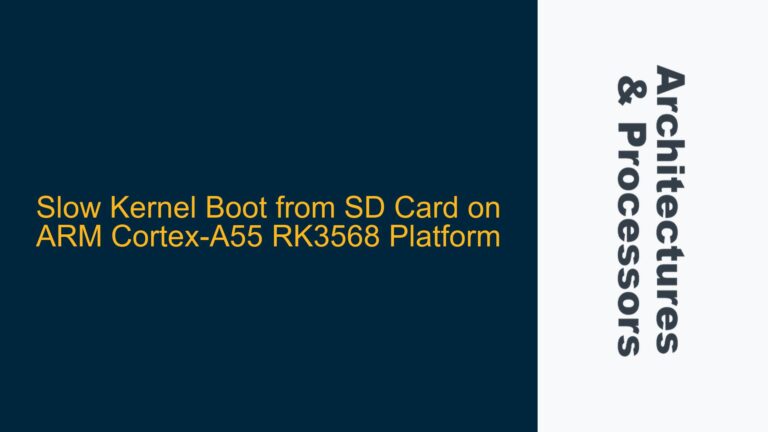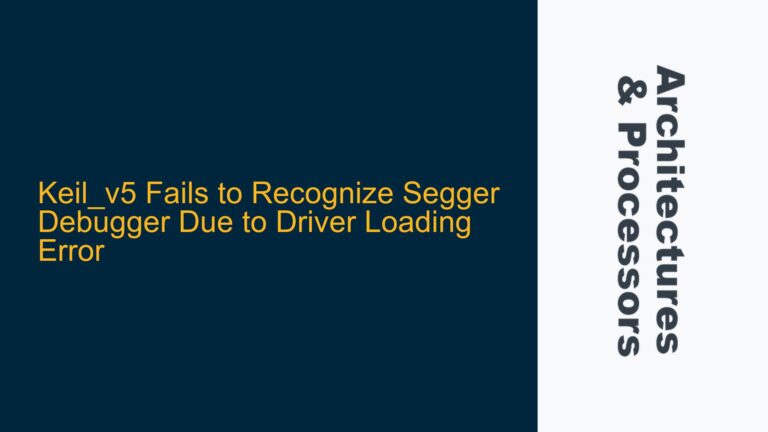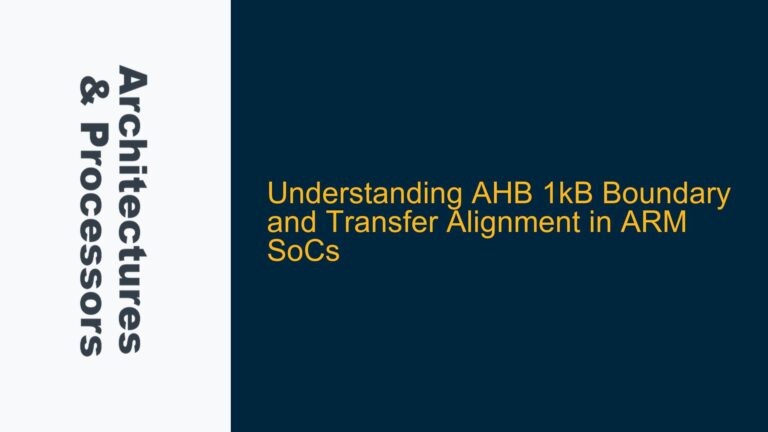ARM Cortex-M0+ Shift Operations with Register-Based Shift Values
The ARM Cortex-M0+ processor, as a member of the ARMv6-M architecture, implements a subset of the Thumb instruction set. One of the key features of this architecture is its support for shift operations, which are commonly used in embedded systems for data manipulation, bitwise operations, and performance optimizations. The Cortex-M0+ supports shift instructions such as LSLS (Logical Shift Left), LSRS (Logical Shift Right), and ASRS (Arithmetic Shift Right), which can shift the contents of a register by either an immediate value or a value stored in another register.
However, the behavior of these shift operations when using register-based shift values has raised questions, particularly when the shift value exceeds the expected 5-bit range (0-31). This issue is critical because it affects both the correctness of the results and the potential for optimization in firmware implementations. Understanding the underlying mechanics of these instructions is essential for developers working on performance-critical applications or those seeking to exploit the architecture for creative optimizations.
Shift Value Truncation and Masking in ARMv6-M Architecture
The ARMv6-M architecture specifies that shift operations using register-based shift values should only consider the least significant 5 bits of the shift value. This means that any value stored in the shift register is effectively masked to a 5-bit value, ensuring that the shift amount remains within the range of 0 to 31. This behavior is consistent across all shift instructions, including LSLS, LSRS, and ASRS.
For example, if a developer attempts to shift a value using a shift register containing 0x40 (binary 01000000), only the least significant 5 bits (00000) are considered, resulting in a shift amount of 0. This truncation ensures that the shift operation remains within the architectural limits, preventing undefined behavior or unexpected results. However, this behavior can be counterintuitive for developers who are unaware of the masking mechanism, leading to confusion when shift values greater than 31 are used.
The masking mechanism is implemented at the hardware level, ensuring that the shift operations are both efficient and predictable. This design choice aligns with the RISC principles of simplicity and regularity, enabling the Cortex-M0+ to execute shift operations in a single clock cycle while maintaining consistent behavior across all valid shift values.
Leveraging Shift Value Masking for Firmware Optimization
While the truncation of shift values to 5 bits may initially seem like a limitation, it can be exploited for creative optimizations in firmware implementations. One such optimization involves packing multiple shift values into a single register and using sequential shifts to extract and apply each value. This technique reduces the number of registers required to pass multiple shift values to a subroutine, improving code density and potentially reducing execution time.
For instance, consider a scenario where six 5-bit shift values are packed into a single 32-bit register. By shifting the register right by 5 bits after each shift operation, the next shift value can be extracted and applied without requiring additional registers or memory accesses. This approach is particularly useful in resource-constrained environments, where minimizing register usage and maximizing code efficiency are critical.
To illustrate this technique, assume a register R0 contains the packed shift values [Value1, Value2, Value3, Value4, Value5, Value6], each occupying 5 bits. The following sequence of operations can be used to apply each shift value:
- Extract Value1 by masking R0 with 0x1F (binary 00011111).
- Perform the shift operation using Value1.
- Shift R0 right by 5 bits to align Value2 with the least significant 5 bits.
- Repeat steps 1-3 for the remaining shift values.
This optimization not only reduces the number of registers required but also minimizes the overhead associated with passing multiple parameters to a subroutine. However, developers must be aware of the truncation behavior and ensure that shift values are correctly packed and extracted to avoid unintended results.
Practical Considerations and Debugging Tips
When working with shift operations on the ARM Cortex-M0+, developers should consider the following practical aspects to ensure correct and efficient implementations:
-
Shift Value Validation: Always validate shift values to ensure they fall within the expected range (0-31). This is particularly important when using register-based shift values, as values outside this range will be truncated, potentially leading to unexpected behavior.
-
Packed Shift Value Extraction: When using packed shift values, ensure that the extraction logic correctly masks and shifts the register to isolate each 5-bit value. Incorrect masking or shifting can result in applying the wrong shift amount, leading to data corruption or incorrect results.
-
Performance Trade-offs: While packing shift values can improve code density and reduce register usage, it may introduce additional instructions for masking and shifting. Evaluate the performance trade-offs to determine whether this optimization is beneficial for your specific application.
-
Debugging Shift Operations: If unexpected results are observed during shift operations, use a debugger to inspect the contents of the shift register before and after the operation. Verify that the shift value is correctly masked and that the result aligns with the expected behavior.
-
Documentation and Code Comments: Clearly document the use of packed shift values and the associated extraction logic in your code. This ensures that other developers (or your future self) can understand and maintain the implementation.
By understanding the shift value masking mechanism and leveraging it for optimizations, developers can create more efficient and maintainable firmware for the ARM Cortex-M0+. However, careful attention to detail is required to avoid pitfalls and ensure correct operation.
Conclusion
The ARM Cortex-M0+ shift instruction behavior, particularly when using register-based shift values, is a powerful feature that can be both a source of confusion and an opportunity for optimization. By recognizing the 5-bit truncation mechanism and understanding its implications, developers can avoid common pitfalls and exploit this behavior for creative optimizations. Whether you are working on performance-critical applications or simply seeking to improve code efficiency, a deep understanding of these architectural details is essential for success in embedded systems development.
